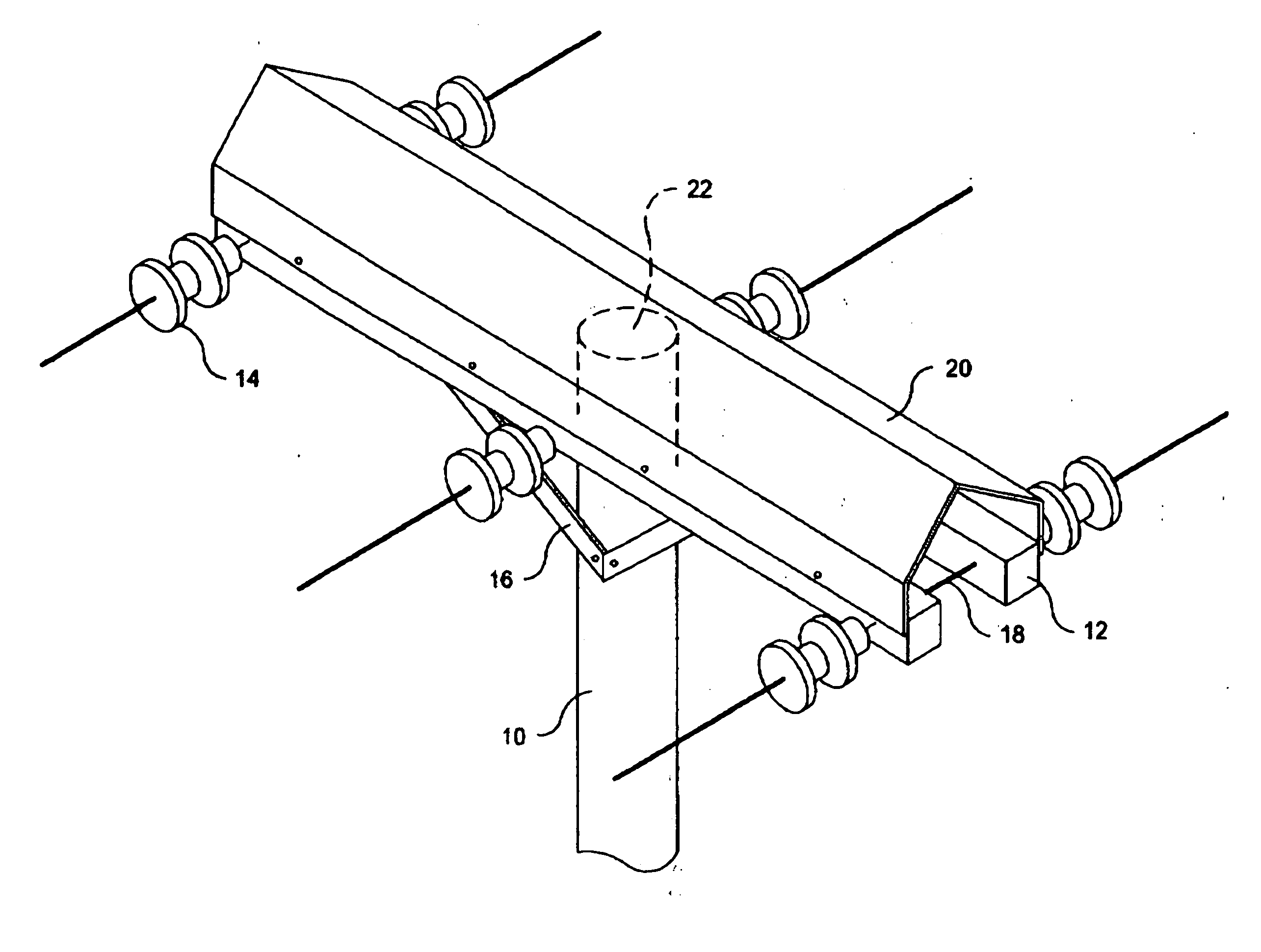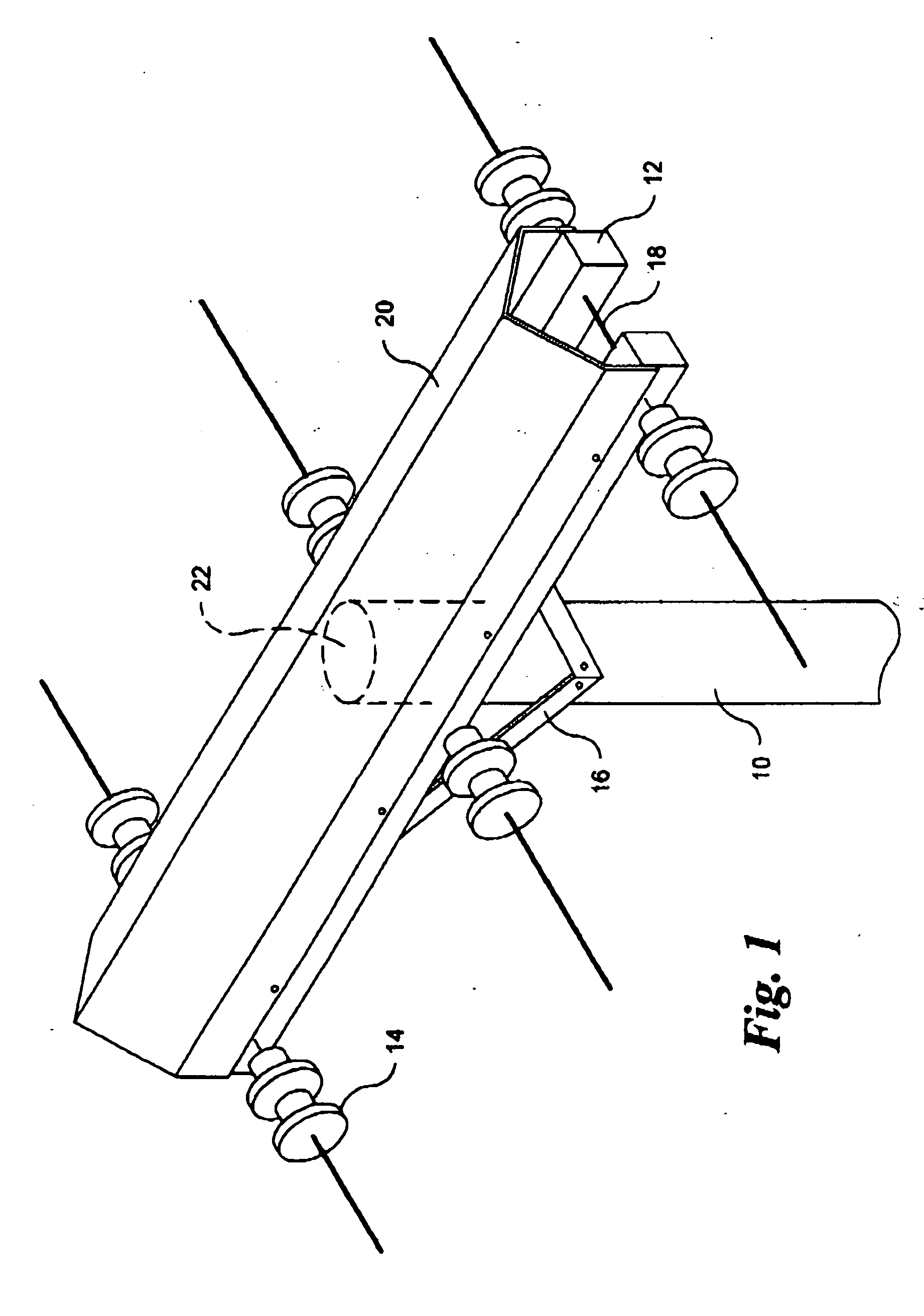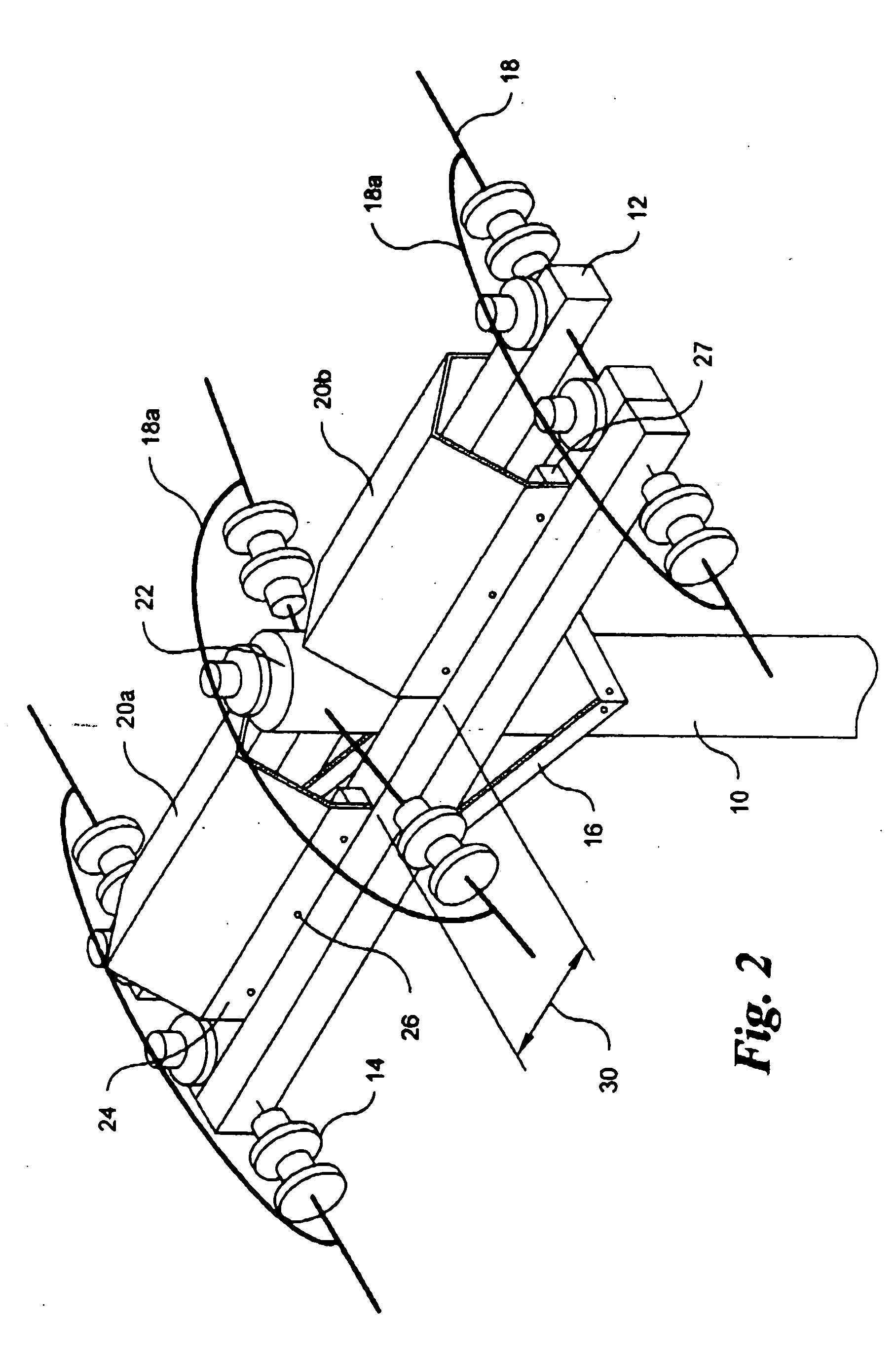Arm guard for preventing raptor nesting
- Summary
- Abstract
- Description
- Claims
- Application Information
AI Technical Summary
Benefits of technology
Problems solved by technology
Method used
Image
Examples
Embodiment Construction
[0016]FIG. 1 is a perspective view of the present invention installed on a cross-armed utility end pole. The housing 20 is made of non-conductive, non-sticky material and has a sloped top to prevent debris from accumulating at the top of the housing. On the end pole shown, the housing completely covers the top 22 of the utility pole 10. The housing 20 is one continuous smooth surface. The housing 20 is attached parallel to the cross arms 12 which are attached by supporting struts 16 to the utility pole 10. The utility pole shown is an electrical utility pole and the bells 14 and the electrical wire 18 are shown attached to the cross arm.
[0017]FIG. 2 is a perspective view of the present invention installed on a cross arm utility pole and has a pole jutting up between the middle of the housing. This is by far the more common utility pole and since the top 22 of the utility pole 10 juts up above the cross arms 12 and has wire 18a running through the top 22, the housings cannot be cont...
PUM
 Login to View More
Login to View More Abstract
Description
Claims
Application Information
 Login to View More
Login to View More - R&D
- Intellectual Property
- Life Sciences
- Materials
- Tech Scout
- Unparalleled Data Quality
- Higher Quality Content
- 60% Fewer Hallucinations
Browse by: Latest US Patents, China's latest patents, Technical Efficacy Thesaurus, Application Domain, Technology Topic, Popular Technical Reports.
© 2025 PatSnap. All rights reserved.Legal|Privacy policy|Modern Slavery Act Transparency Statement|Sitemap|About US| Contact US: help@patsnap.com



